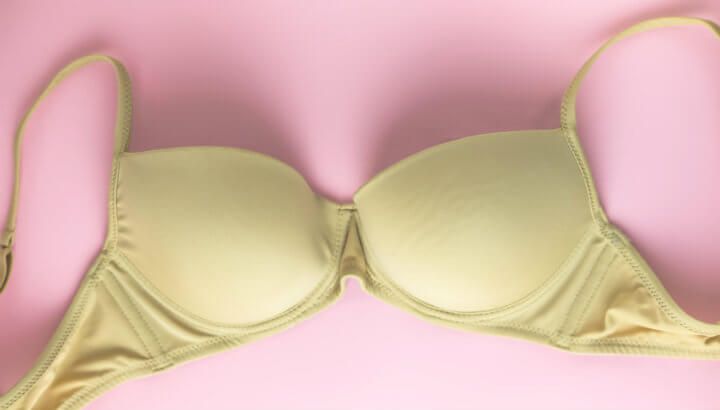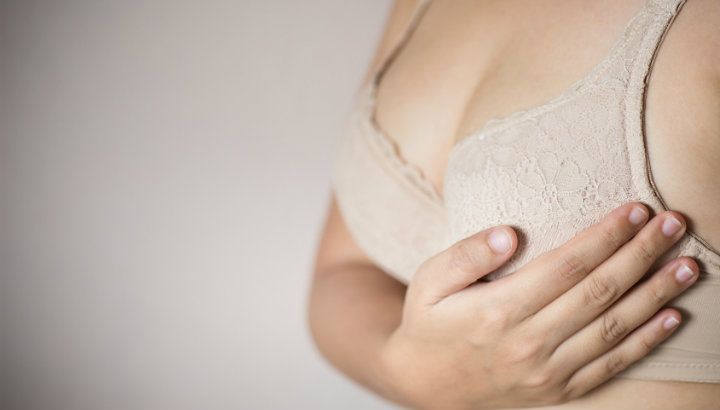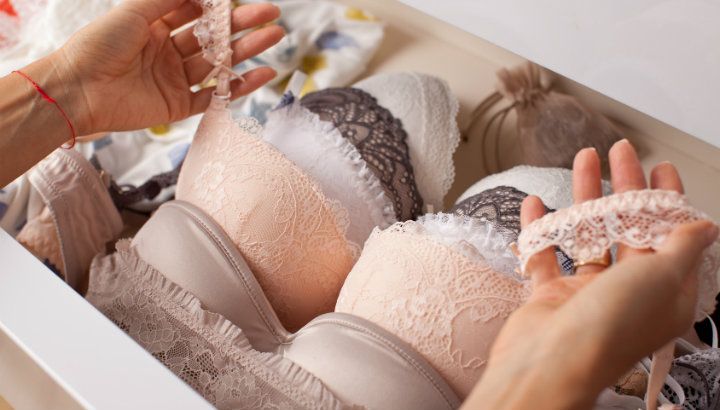
Have you ever noticed there are brownish or greyish patches inside the cups of your bras? They are usually round and concentrated around the area where the nipple makes contact with the fabric.
Or perhaps you’ve spotted other types of stains, like white, yellow or green goo, or perhaps even blood, making an appearance inside those cups.
Don’t ignore these weird marks because they are actually messages from your body, and could be telling you important things about your health. Here’s how to decode the stains inside your bra.
Grey or brown stains
This is the most common type of stain you’ll see in your bra. It’s usually due to the release of normal oils from the small ducts in the nipples. The breasts are full of glands and lymphatic tissue which terminates in small openings in the nipple. There are also small holes called Montgomery’s tubercles around the areola which release a kind of oil to moisturize the nipple and protect it during breastfeeding. Even outside of nursing a baby, the areola and nipple may excrete a small amount and this builds up inside the bra.
Some sources say the gray or brown patches may also signify an excess of toxins in the body, which is excreted via the lymph system. A 2009 study confirmed that the breast tissue is particularly sensitive to environmental factors such as chemicals and pollutants. This can be prevented by using natural products around the home and encouraging detoxification through diet and supplements.

Clear or yellow
This type of fluid may collect in the nipple ducts and then spontaneously excrete every few days or weeks. It could be a sign of hormonal changes or a small growth within the duct. If you observe this type of stain in your bra, it should be checked out by a doctor.
Thick white or greenish
Many women in their 30s or 40s, especially those who have been pregnant or breastfed an infant, may find their nipples excrete thick white or greenish fluid when touched or squeezed. While this type of fluid is often normal, it should be observed and if there are any other abnormal symptoms in the nipples or breasts, seeing a health care professional is a good idea.
White and flaky
A light, flaky film on the surface of the nipple is completely normal and often forms and then gets washed off in the shower. You may see some of this film inside your bra.

When you should worry about the stains in your bra
Overall, spontaneous discharge that is more than just a darkened spot in your bra is possibly a concern. If you’re not pregnant, breastfeeding or recently weaned, and don’t have an obvious infection or other existing condition, you should definitely see a doctor about any discharge you find on your nipple or bra.
Be sure to get it checked out especially if there is discharge from only one breast, or if you observe any blood. When the nipple releases fluid spontaneously, i.e., without being touched or squeezed, that’s often a sign of something unusual.
Ask your health care practitioner to check for conditions such as hypothyroidism, noncancerous pituitary tumors or clogging of the breast ducts. On rare occasions, nipple discharge can be a sign of breast cancer.

Other nipple conditions you should know about
- Pain during menstruation: Nipples can be sore during that time of the month due to water retention. Wearing a sports bra or foregoing the underwire can help keep things more comfortable during your period.
- Allergy or eczema: Itchy, inflamed or sore nipples could be a response to toxic detergents, products or fabrics. Try switching to natural products and breathable textiles.
- Ectasia: Women over 45 sometimes experience a condition called ectasia, where a milk duct widens and becomes clogged. This must be professionally treated before it gets infected.
How to take good care of your breasts and nipples
Mammary tissue and skin is sensitive, and should only be washed with water. A washcloth or loofah can be used for gentle exfoliation and massage to keep skin healthy and prevent bacteria from getting trapped. Pat dry gently with a towel to prevent excess friction or irritation.
If you do a lot of vigorous activity such as running, be sure to protect the nipples with a well-fitted bra and even cover or lubricate them for comfort.
How to take good care of your bras
If you want your bras to last as long as possible, they should be treated with care. Make sure you hand-wash them in cold water with a gentle detergent. Don’t wring them, just squeeze them between a towel, then hang by the middle piece between the cups.

Most women have a few favorite bras they tend to wear again and again, but it’s best to wash every few wears to prevent a build-up of stains and residues.
Other reasons your bra could be stained
- Deodorant: If your deodorant contains aluminum, it could cause discoloration when it mixes with sweat. Change deodorants if possible, and rinse bras in cold water as soon as possible after excessive sweating.
- Washing with other colors: Hand-washing delicates is great, but if you leave them to soak in the tub or sink with other color groups, you may find light colors getting dingy. Keep whites and pastels separate from darker colors, and especially any red lingerie which is notorious for bleeding out.
- Drying in sunlight: Hanging your unmentionables to dry, rather than putting them in the dryer, is the right thing to do, but keep them in the shade. The UV rays in sunlight can leave fabrics damaged and bleached over time.

With bras being such a ubiquitous everyday item, we often don’t pay them the attention or respect they deserve. Give your breasts and their garments some TLC for lasting longterm health and wellbeing.
FREE book reveals the secret to naturally erasing chronic inflammation! =>
— Liivi Hess

